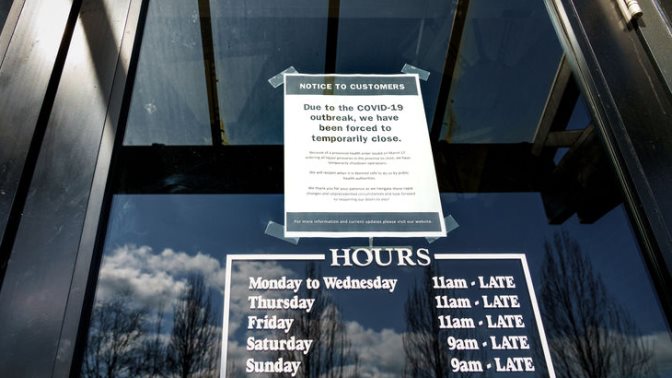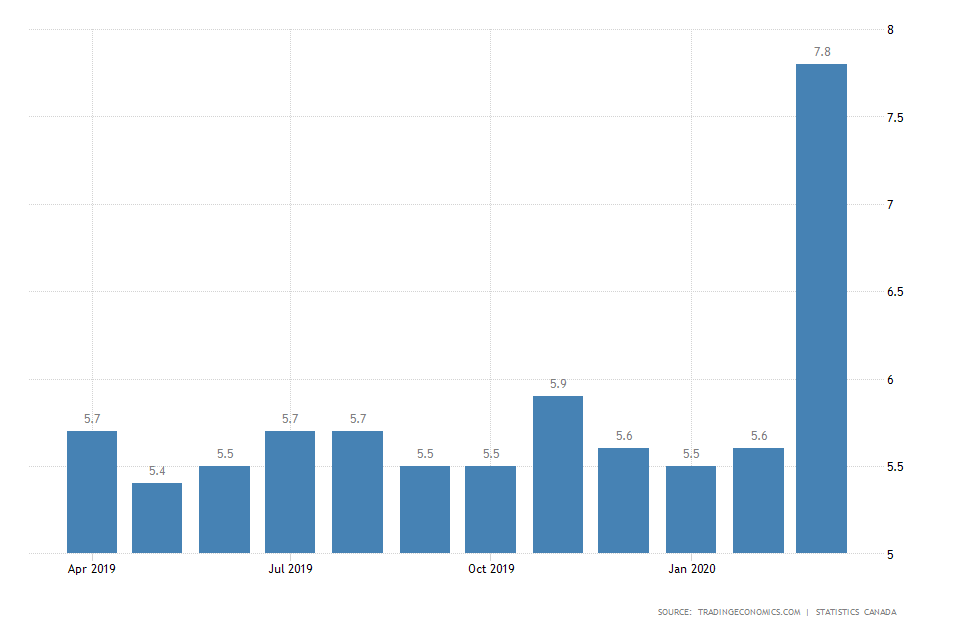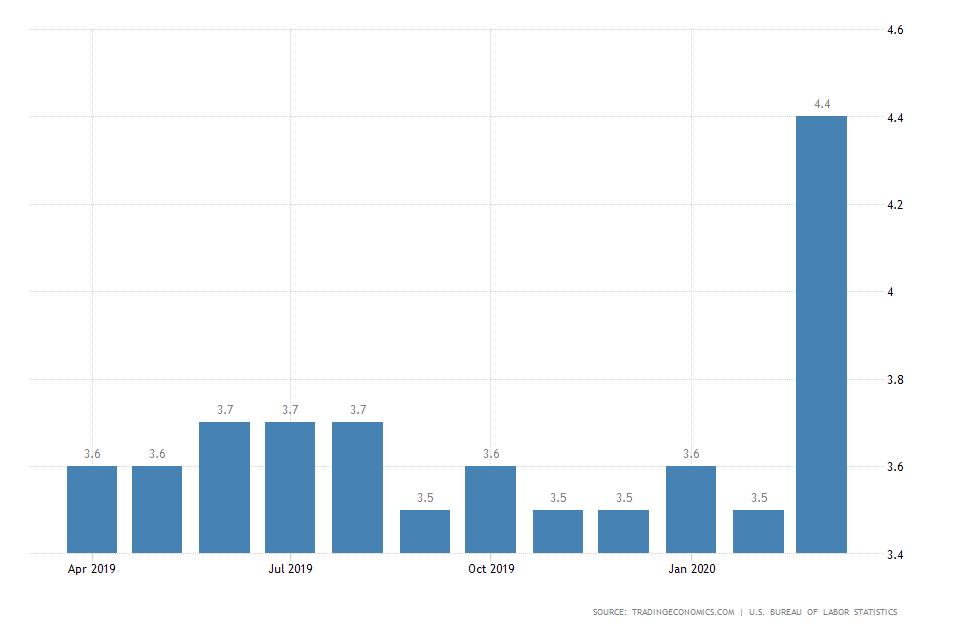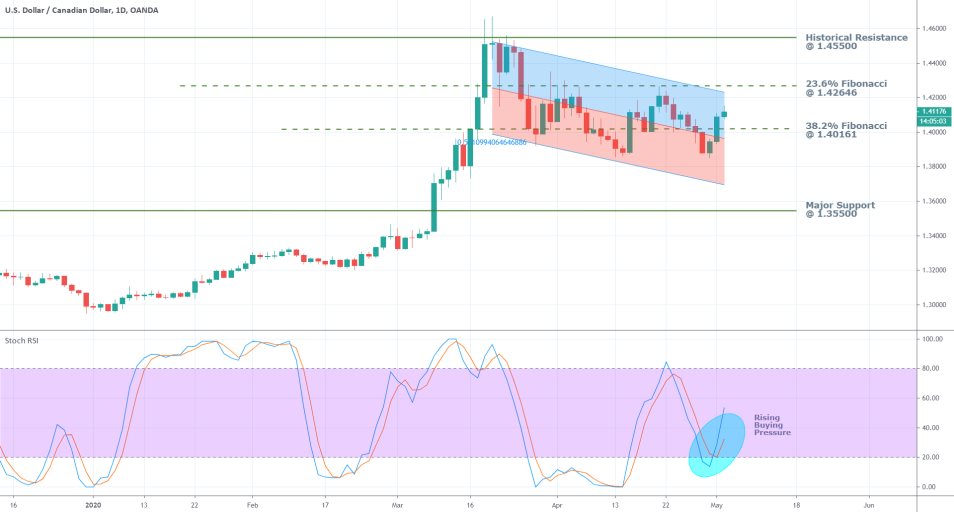
The economic crisis in the US and Canada, caused by the spread of the novel coronavirus, started exerting a heavy toll on the overall economic activity in the two countries in Mid-March after the two respective governments announced national lockdowns.
Since then, millions of people have filed for unemployment claims in both the US and Canada. The two labour markets have felt the brunt of the COVID-19 fallout due to ripples in the financial systems, as an indirect consequence of the policies of social distancing.
Since these policies were put in effect, the unemployment rate in Canada has risen by 2.2 per cent to 7.8 per cent in March. This massive upsurge reflects the jump in the number of unemployed people in the wake of the coronavirus crisis, with many more expected to have lost their jobs in April.

In the US, the unemployment rate has increased by 0.9 per cent to 4.4 per cent in the last month. This number, too, is anticipated to have risen exponentially in April, judging by the over 18 million unemployment claims that have been filed over the same period.

The consensus forecasts project the overall unemployment rate in Canada to have jumped to 20.0 per cent in April. Concerning the US, the rate is anticipated to have jumped to 16.0 per cent.
The forecasts for substantial deteriorations in the two labour markets are likely going to reflect on the brunt of the economic hit, as the healthcare crisis continues to unfold and individuals are still forced to stay at home.
The 'Bureau of Labor Statistics' in the US is scheduled to release the NFP report for April this Friday at 2.30 pm CET. At the same time, 'Statistics Canada' is going to release its own jobs report.
Thereby, the labour data in the two countries are expected to demonstrate the real extent of the coronavirus crisis on the two labour markets, taking into account all of the preliminary data that has been released until now.
The market has already started to price in the likelihood of marked deteriorations in the two countries' employment rates, but even still, Friday's reports are likely to prompt massive volatility on the USDCAD.
The pair is currently consolidating in a tight range between the 23.6 per cent Fibonacci retracement level at 1.42646, which is currently serving as a prominent resistance, and the 38.2 per cent Fibonacci retracement level at 1.40161, which is serving as a prominent support.
The likely upsurge of adverse volatility this Friday is expected to propel the price action outside the boundaries of this consolidation range.

Trendsharks Premium
Gold is undergoing a correction, as investors take profits to offset losses from falling stock prices, impacting their margins. However, we anticipate a renewed wave of [...]
The Swiss stock market index is mirroring its global counterparts, such as Germany 40 and US100, experiencing a sharp decline following the announcement of new [...]
We’re analyzing the weekly chart to grasp the broader market trend. Over the past three years, the US30 index has surged by 17,000 points, often resembling a nearly straight [...]
Over the past week, the DAX has experienced a sharp decline, plunging by an astonishing 3,400 points. This downward movement is not isolated, as its international counterparts, such as the UK100 and US100, are also facing significant [...]
EURUSD recently formed a double top at 1.0930, signaling a potential trend reversal, and has since begun a correction. After a 600-pip rally since early March, a pullback at this stage is both expected and healthy. Given these conditions, we are placing a [...]
Since early March, EURJPY has surged nearly 1,000 pips, providing us with several excellent trading opportunities. However, as the rally matures, many early buyers are beginning to take profits, leading to a noticeable slowdown in the uptrend. On Friday, the pair formed a [...]
The AUDJPY currency pair continues to be dominated by bullish momentum, as multiple golden cross patterns reaffirm the strength of the ongoing uptrend. Despite this, we are witnessing a much-needed [...]
The EURAUD currency pair appears to be undergoing a trend reversal, signaling a potential shift in market direction. A notable technical development is the formation of a Death Cross on the chart, a widely recognized bearish indicator that typically suggests a [...]
After securing an impressive 200-pip profit last week, the EURJPY currency pair is now undergoing a southward correction, retracing some of its recent gains. Despite this temporary pullback, the Golden Cross remains intact, reinforcing our view that the overall trend continues to be [...]
The appearance of a Golden Cross in Silver strengthens our analysis that the metal is currently in a strong uptrend, indicating further bullish momentum in the market. This technical pattern, where the short-term moving average crosses above the [...]
This trade presents a considerable level of risk and can be classified as an opportunistic move based on recent price action. The GBPUSD currency pair has experienced a substantial bullish rally, surging by nearly 500 pips in a strong upward movement. However, after this extended period of appreciation, the pair is showing signs of a potential [...]
The anticipated Death Cross on the SMI20 appears to be failing as price finds strong support at the 23% Fibonacci retracement level. After testing this area, the index has shown bullish strength, printing several large green candles, signaling an increase in [...]
A Golden Cross has just appeared on the USDJPY chart, signaling a potential bullish move. This technical pattern occurs when the 20 period moving average crosses above the 60 period moving average, a widely recognized indication of increasing [...]
After 2 months of a down trend, we finally see some indications of price recovery for Oil. The golden cross, a historic buy signal, supports this [...]
For the past month, the German DAX40 has experienced a remarkable 10% surge, reflecting strong bullish momentum. Despite ongoing market volatility and frequent pullbacks, every dip continues to attract fresh buyers, reinforcing the [...]
Oil continues its downward trajectory, despite occasional pullbacks. The overall trend remains bearish, reinforced by multiple Death Cross patterns, a classic sell signal indicating further weakness. Adding to this bearish outlook, the critical [...]
Over the past few days, gold has experienced a sharp decline of more than $100. This downturn can be attributed in part to traders securing profits to manage their margins, which are under strain due to the significant drop in major indices. Currently, gold has fallen below the [...]
The NASDAQ 100 index is showing strong bullish momentum, as evidenced by the formation of a Golden Cross on the chart. This classic buy signal occurs when the short moving average crosses above the long term moving average, suggesting that upward momentum is [...]
The EURAUD currency pair has encountered a significant resistance level, failing to break above the critical 61% Fibonacci retracement level. This suggests that bullish momentum is weakening, reinforcing the case for a potential downward move. Given this technical setup, we favor entering a [...]
The UK100 is experiencing a remarkable rally! Over the past few weeks, the British stock market index has surged nearly 800 points. Each minor dip has attracted more buyers, fueling the bullish momentum. However, since last week, we’ve observed a slight [...]




















